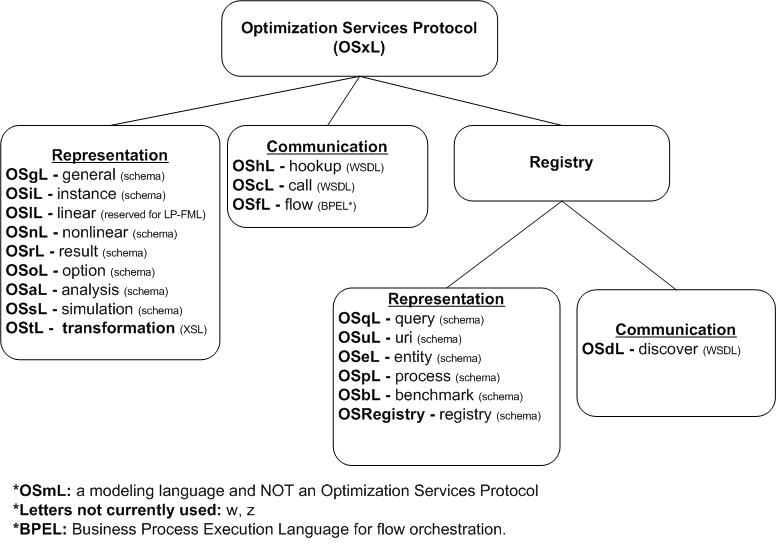|
Optimization Services Protocol (OSP)
A protocol is an agreed upon format for transmitting data between two devices, hardware or software. The Optimization Services Protocol determines how optimization related data are represented and communicated between two Optimization Services compatible software components.
OSP is a rapidly evolving set of standards that consists of over 20 sub-protocols, all described by an abbreviation of in the form of “OSxL”, meaning some Optimization Services x Language. For example, OSiL stands for Optimization Services instance Language, which is a language expressed in XML to specify the structure and format of general optimization instances. As a core of the Optimization Services framework, OSP has great promise for the world of Operations Research applications, optimization systems and distributed computing.
More involved than the HTTP/HTML protocol, Optimization Services Protocol contains different sub-protocols as there are more heterogeneous components than just the Web browser and Web server. The Optimization Services framework is mainly concerned with standardization in three areas:
1) Optimization representation, 2) Optimization communication that includes accessing, interfacing and orchestration, 3) Optimization service registration and discovery.
For the sake of uniformity, we specify Optimization Services Protocols in all these three areas by standard 4-letter acronyms of the form OSxL, standing for Optimization Services x Language, where “x” is another defined letter. The following figure shows a tree view of all the current Optimization Services x Languages.

|

